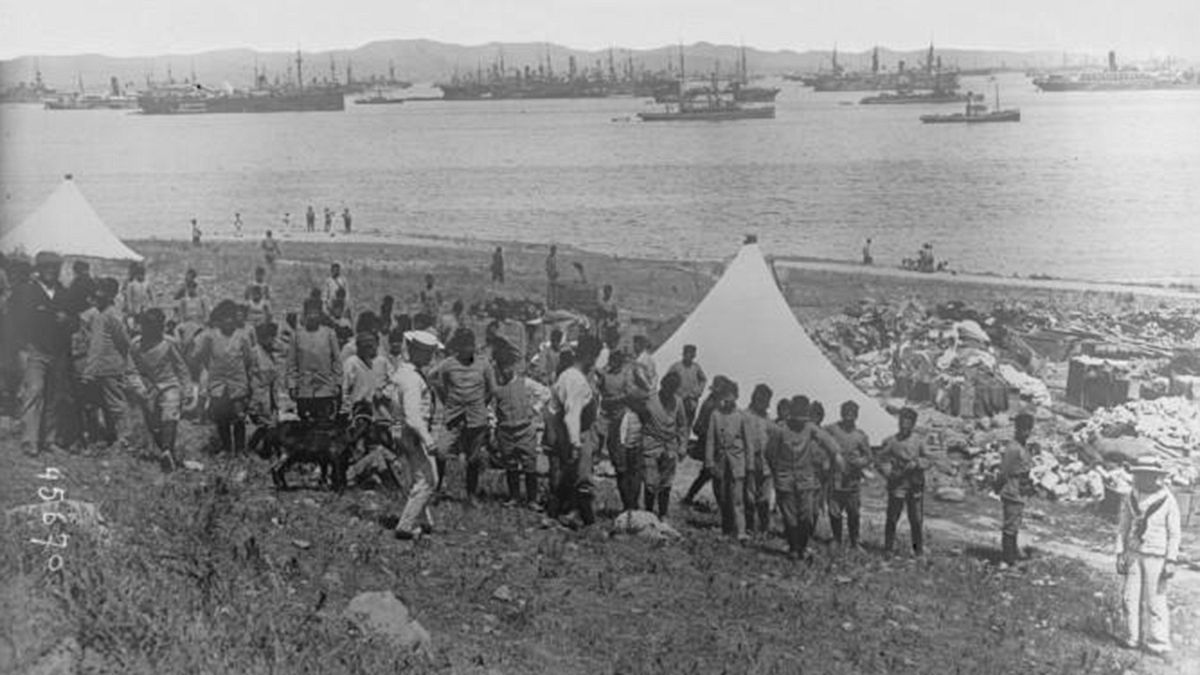Armistice signed by Ottoman and British leaders ending hostilities in the Middle Eastern theatre of war. Led to the partitioning of the Ottoman Empire
1918: October 30
On October 30, the Ottoman leadership signed the Armistice of Mudros, declaring peace with the British Allied representatives. They followed Germany and Austria-Hungary’s capitulations earlier in September- all parties were unable to sustain the great efforts needed to continue to pursue the war.
While the Ottomans had had some military success in 1915-16 by defending the Gallipolli Peninsula, by 1918 the Allied invaders had overrun the land. The concurring Arab revolt destroyed the Ottoman economy, leading to at least six million people dead and millions more starving. When Ottoman representatives tentatively approached the British for possibilities for peace, Britain was hesitant as it wished to gain more control of the region than it had promised to its other allies, such as France, who had been promised control of Syria and Lebanon. By outmaneuvering the French Prime Minister, Lloyd George negotiated an immediate armistice with the Ottoman Empire, thereby engineering its exit from the war and gaining tactical advantage. This resulted in France and Britain grappling amongst each other for control of the regions at the Paris Peace Conference and for many years after.
The Treaty of Mudros, signed aboard the British ship the Agamemnon, ended hostilities at noon on October 31. The terms of the treaty included: the opening of the Dardanelle and Bosporus straits to Allied warships and its forts to military occupation, the demobilisation of the Ottoman army, the release of all prisoners of war, and the evacuation of its Arab provinces. Ottoman delegates ostensibly denied that the treaty was an act of surrender but this was quickly discovered to be the case.
The Treaty of Mudros effectively heralded the dissolution of the Ottoman Empire at the same time as ending its participation in World War I. The victors of the War would carve up the remnants of the Empire between themselves during the peace process, creating the new geopolitical zone of the modern Middle East.
The Treaty successfully left the Germans alone in their war efforts; the final armistice would be signed on 11 November 1918. The war would soon be over.
Main picture: public domain on Gallica, Bibliothèque Nationale de France
